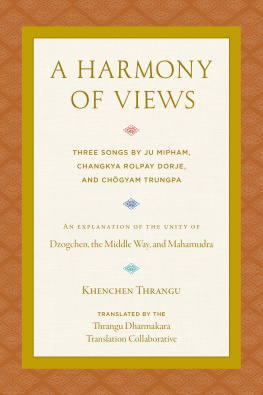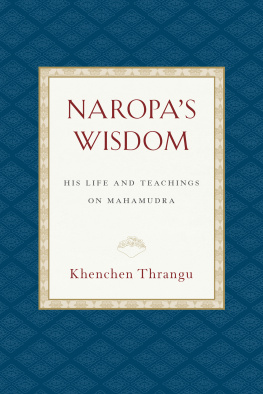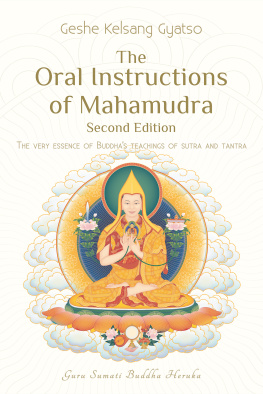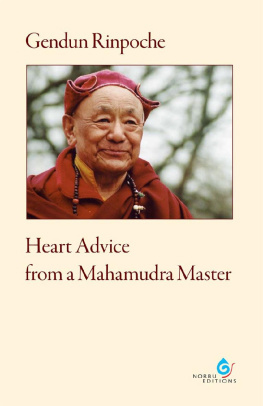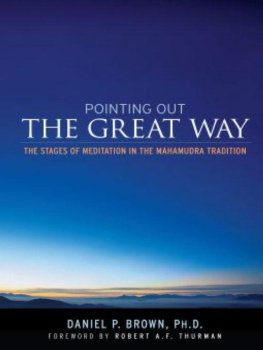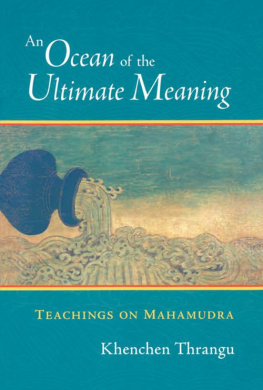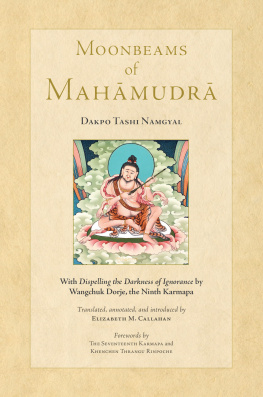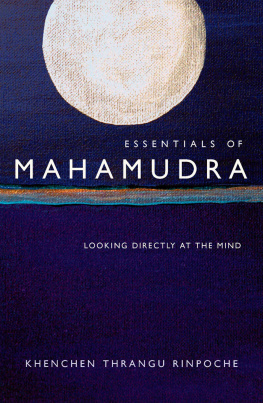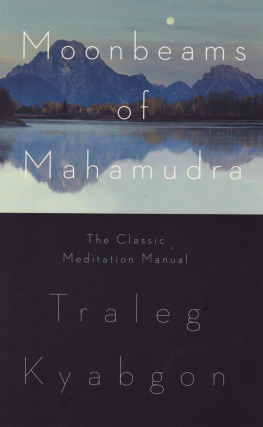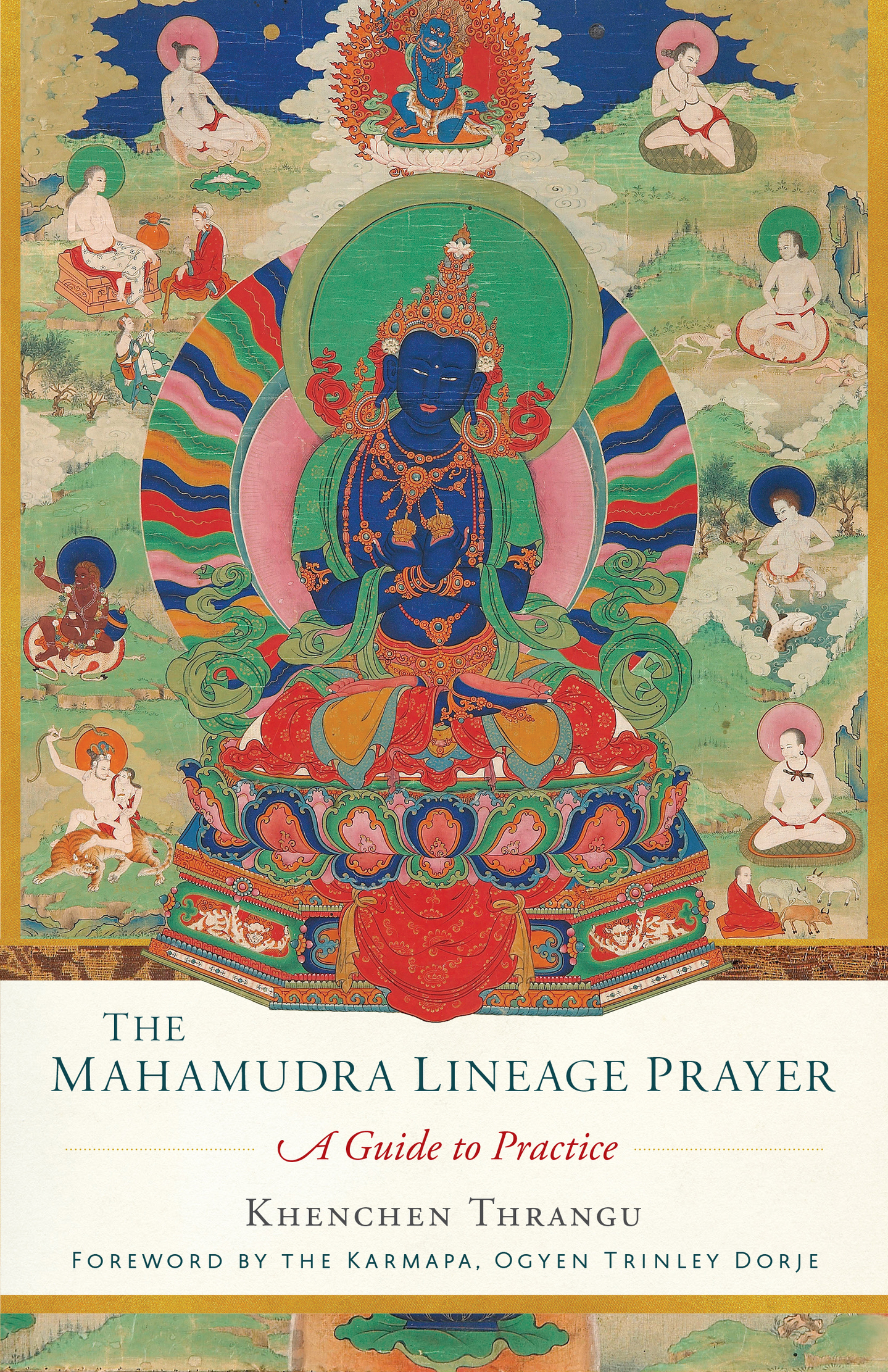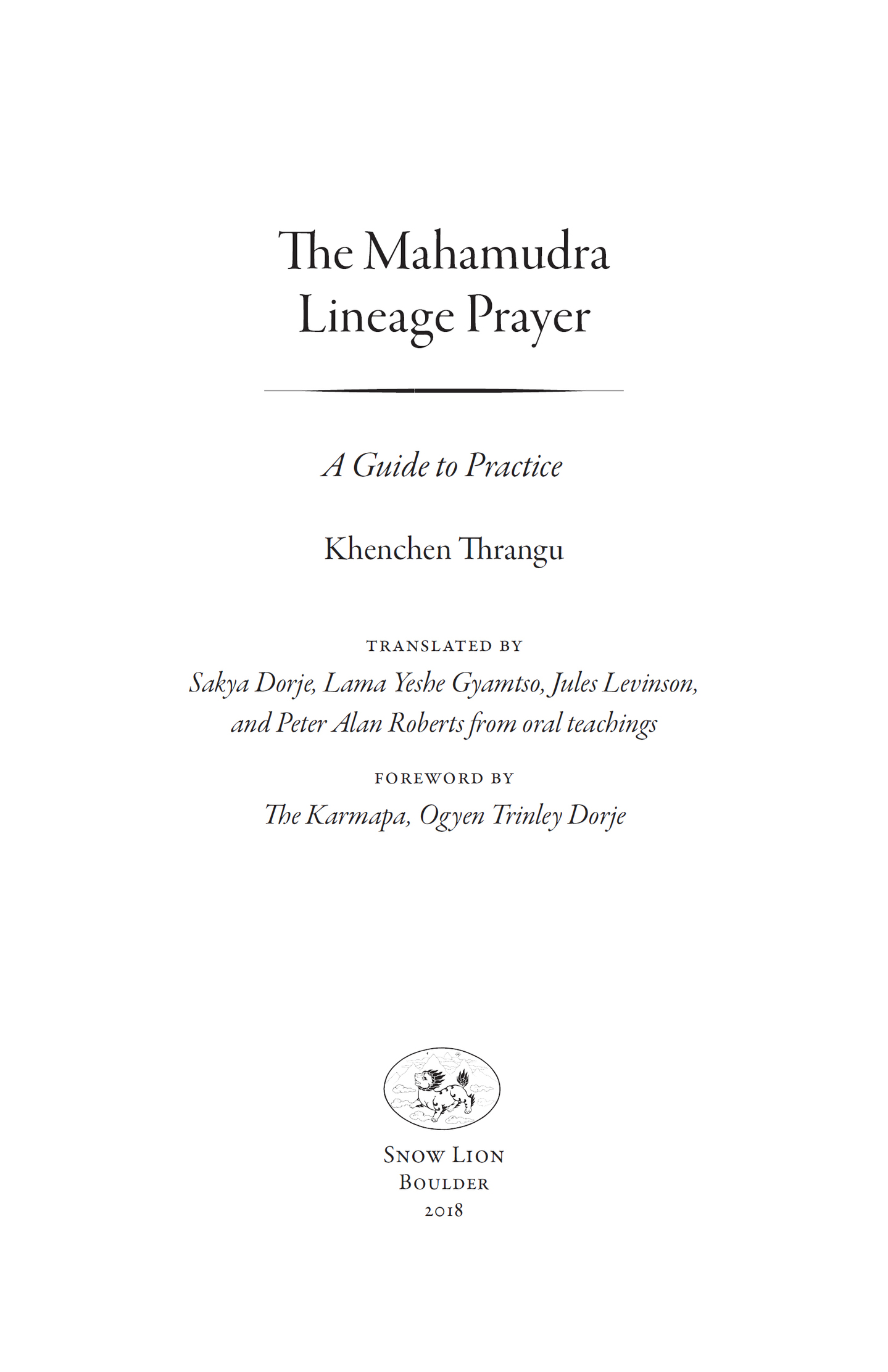Contents
Snow Lion
An imprint of Shambhala Publications, Inc.
4720 Walnut Street
Boulder, Colorado 80301
www.shambhala.com
2018 by Khenchen Thrangu
All rights reserved. No part of this book may be reproduced in any form or by any means, electronic or mechanical, including photocopying, recording, or by any information storage and retrieval system, without permission in writing from the publisher.
Cover art: Detail of thangka of Buddha Vajradhara surrounded by mahasiddhas. 17th century c.e. Photo: ierry Ollivier. RMN-Grand Palais / Art Resource, NY
Cover design: Gopa & Ted2, Inc.
Library of Congress Cataloging-in-Publication Data
Names: Shakya Dorje, translator. | OHearn, Peter, 1959 translator. | Levinson, Jules B., translator. | Roberts, Peter Alan, 1952 translator. | O-rgyan-phrin-las-rdo-rje, Karma-pa XVII , 1985 writer of foreword. | Thrangu, Rinpoche, 1933 Works. Selections. English. | Rang-byung-rdo-rje, Karma-pa III, 12841339. Nyes don phyag rgya chen poi smon lam. | Rang-byung-rdo-rje, Karma-pa III, 12841339. Nyes don phyag rgya chen poi smon lam. English.
Title: The Mahamudra lineage prayer: a guide to practice / Khenchen Thrangu; translated by Sakya Dorje, Lama Yeshe Gyamtso, Jules Levinson, and Peter Alan Roberts from oral teachings; foreword by the Karmapa, Ogyen Trinley Dorje.
Description: First edition. | Boulder: Snow Lion, 2018. | Includes bibliographical references and index.
Identifiers: LCCN 2017054377 | ISBN 9781559394819 (pbk.: alk. paper)
eISBN 9780834841819
Subjects: LCSH : Rang-byung-rdo-rje, Karma-pa III, 12841339.
Nyes don phyag rgya chen poi smon lam. | Kar-ma-pa (Sect)Prayers and DevotionsHistory and criticism. | Mahmudr (Tantric rite)
Classification: LCC BQ7682 .. R363 M3413 2018 | DDC 294 .3/444 DC23
LC record available at https://lccn.loc.gov/2017054377
v5.3.2
a
F OREWORD

T HE M AHAMUDRA L INEAGE Prayer was composed by Pengar Jampal Zangpo, one of the two tutors of the Seventh Karmapa, Chdrak Gyatso. Jampal Zangpo was himself a well-known Mahamudra lineage holder, which is why he composed this lineage prayer. In the opening verse, he pays homage to the Mahamudra lineage, including all the branches of the Dagpo Kagyu. In the verses that follow, he introduces both the preliminary practice and the main points of the Mahamudra practice, using vivid pith instructionsfor example, Detachment is the foot of meditation, Devotion is the head of meditation, Nondistraction is the body of meditation, and so forth. The way in which the prayer combines the practice of Mahamudra and the stages of the path makes it very special. The prayer provides a concise guide to practicing Mahamudra; it expresses clearly the main points to be focused on, uses simple language and everyday imagery, is easy for everyone to understand, and can be recited by anyone in any of the Dagpo Kagyu traditions. These are the reasons it has become so important, not just in the Karma Kamtsang tradition, but in other branches of the Dagpo Kagyu too.
Before Lord Gampopa, the Mahamudra practices were restricted Vajrayana tantric teachings, requiring special empowerments. They were oral teachings transmitted to only a few close disciples and advanced practitioners. Gampopa introduced the sutric tradition of Mahamudra, using the King of Samadhi Sutra, and made these teachings accessible to many more people, without the need for tantric requirements. From that time on, the Mahamudra practice became very popular.
Having been ordained and educated in the Kadampa lamrim tradition founded by Jowo Atisha, Gampopa later studied the Kagyu tradition of Mahamudra with Jetsun Milarepa, who became his principal teacher. Gampopa then melded these two strands together. He regarded Mahamudra meditation as the highest possible Dharma practice, the very essence of the Dharma, and hence it required a strong, basic training. Because renunciation is the first step in becoming a Dharma practitioner, Gampopa introduced the four contemplations from the Kadampa lamrim tradition that are designed to develop renunciation: this precious human birth, and death and impermanence, in order to cut attachment to this life; karma, cause and effect, and the sufferings of samsara, in order to counter the desire for future lives. In The Mahamudra Lineage Prayer, the verse beginning Detachment is the foot of meditation is intended to encompass all four contemplations. The prayer illustrates how Gampopa had integrated the lamrim stages of the path into the Mahamudra tradition.
Khenchen Thrangu Rinpoche is a great scholar, a great practitioner, and a contemporary Karma Kagyu master, who has dedicated his whole life to the service of the Dharma. He has introduced many students in both the East and the West to Buddhadharma and meditation, and His Holiness the Fourteenth Dalai Lama appointed him to be my personal tutor when I came to India. He has given many teachings on the practice of Mahamudra and classical Mahamudra texts. I, therefore, welcome the publication of this compilation of his teachings on The Mahamudra Lineage Prayer, which extend over nearly forty years. He is now advanced in years, and I pray that he may live long and continue to turn the vast and profound wheel of Dharma for the benefit of all sentient beings.
Finally, my thanks go to Clark Johnson, a long-standing student of Khenchen Thrangu Rinpoche and director of Namo Buddha Publications, for compiling and editing this collection, to the translators Sakya Dorje, Lama Yeshe Gyamtso, Jules Levinson, and Peter Alan Roberts, and to all others involved in making this book. I am sure that it will bring great benefit to all who read it, both increasing their understanding of the prayer and informing their practice.
The Seventeenth Karmapa, Ogyen Trinley Dorje
March 28, 2018
E DITOR S P REFACE
F OR THE PAST forty years, Thrangu Rinpoche has begun all his teachings by reciting The Mahamudra Lineage Prayer (Tib. Dorje Chang Thungma, literally Short Vajradhara). There are two reasons why he does this. First, this prayer is comprehensive: it lists the great adepts of the Mahamudra lineage, reviews the common and special preliminaries, provides instructions for Shamatha (calm abiding) and Vipashyana (special insight) meditation, sets forth the essentials of Mahamudra practice, and finally makes an aspiration to achieve enlightenment. All this is done in twenty-nine lines, with each line having just nine syllables, making it a song of realization (Skt. doha). Although both Thrangu Rinpoche and the author of this prayer are members of the Karma Kagyu lineage, this prayer centers around the practice of Mahamudra, which is also practiced in other lineages. We have therefore named it


